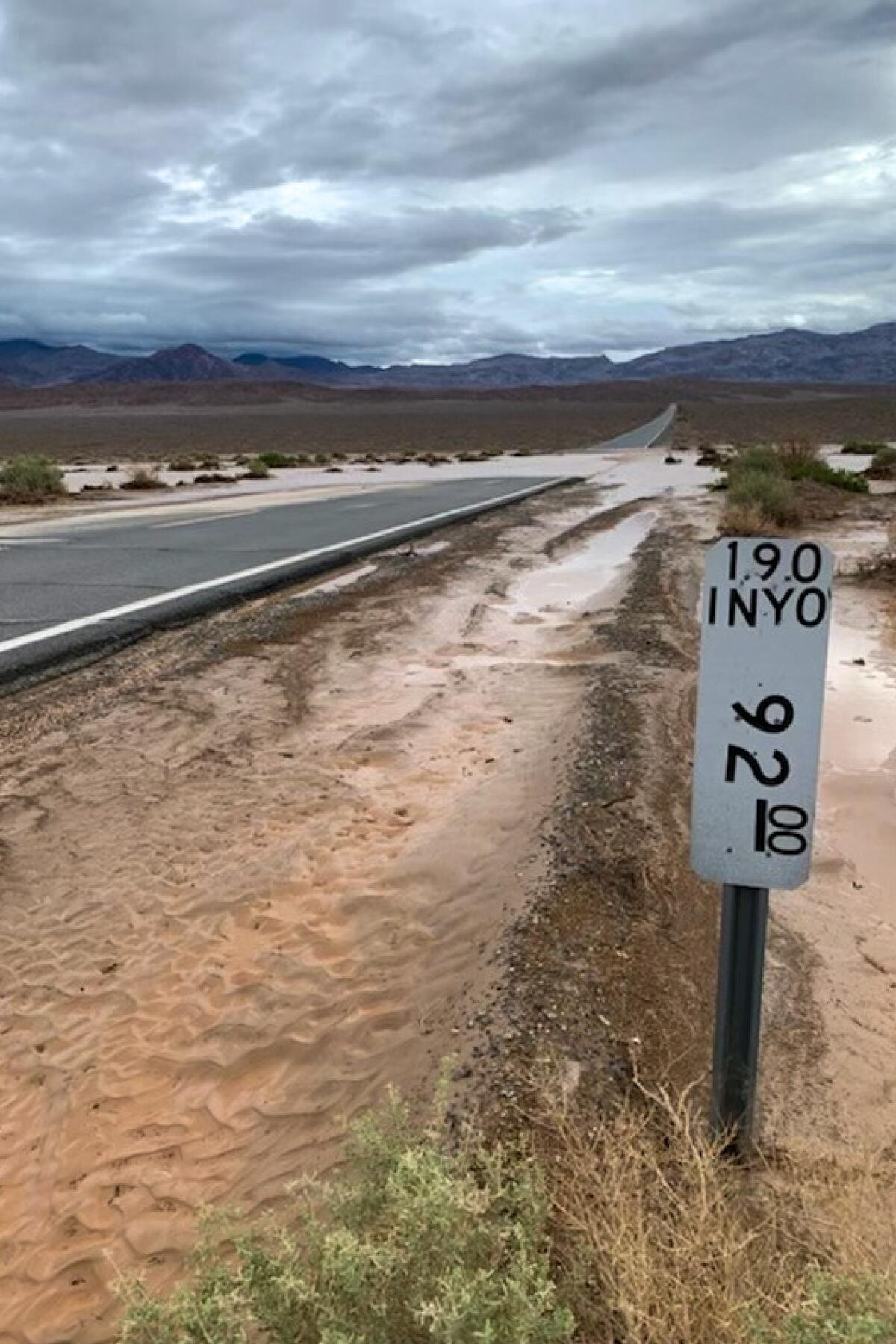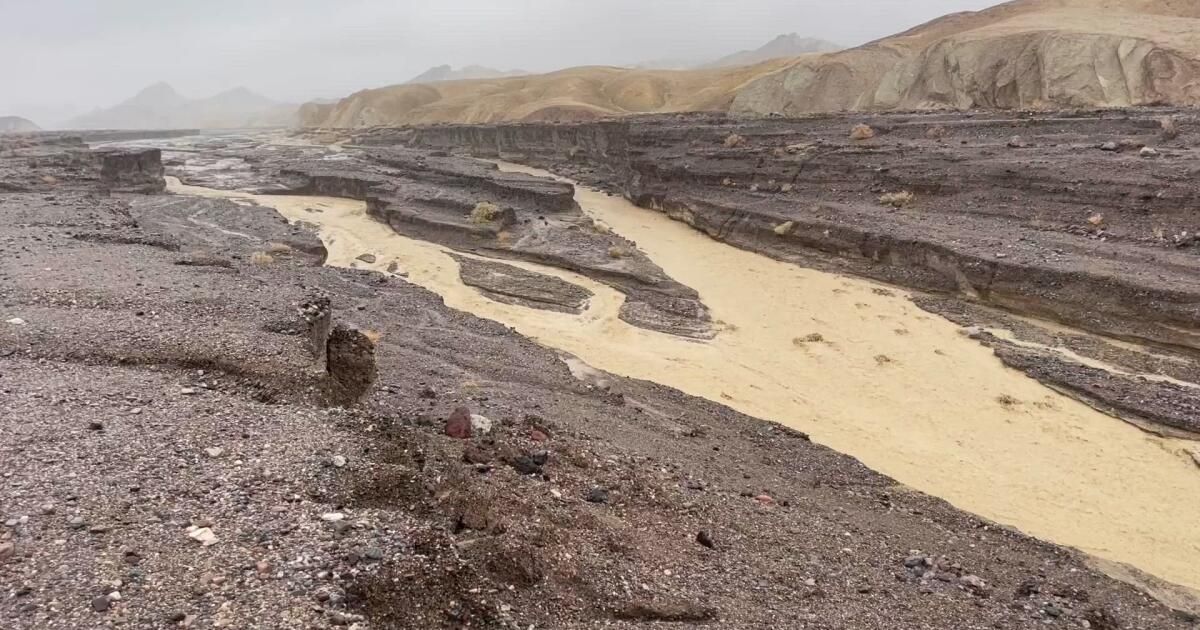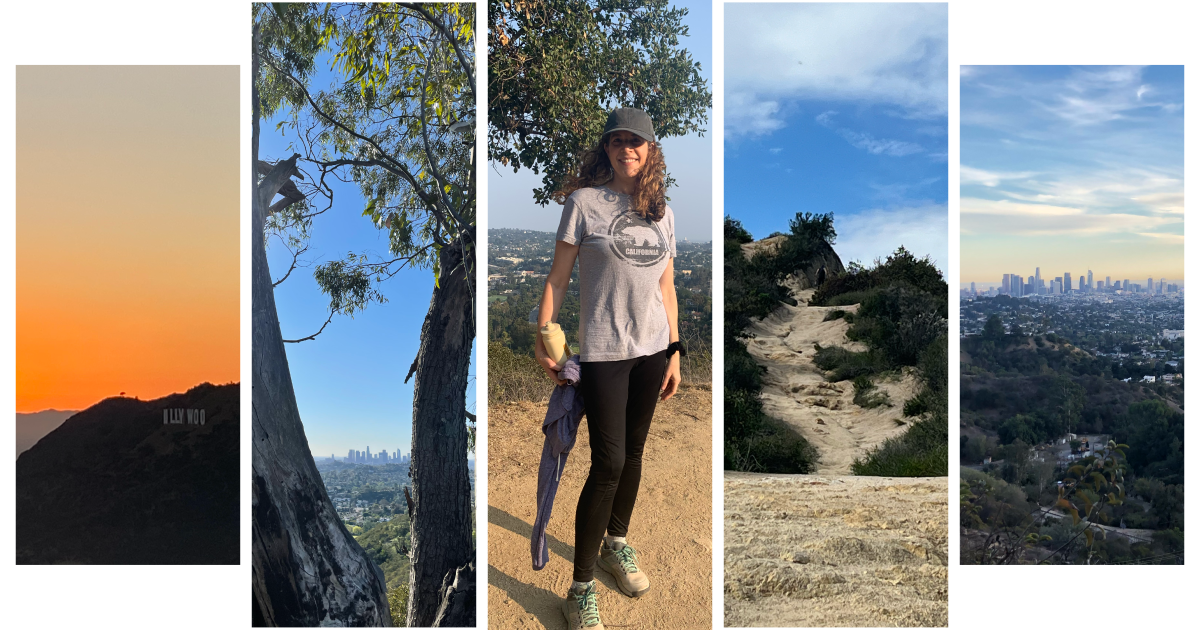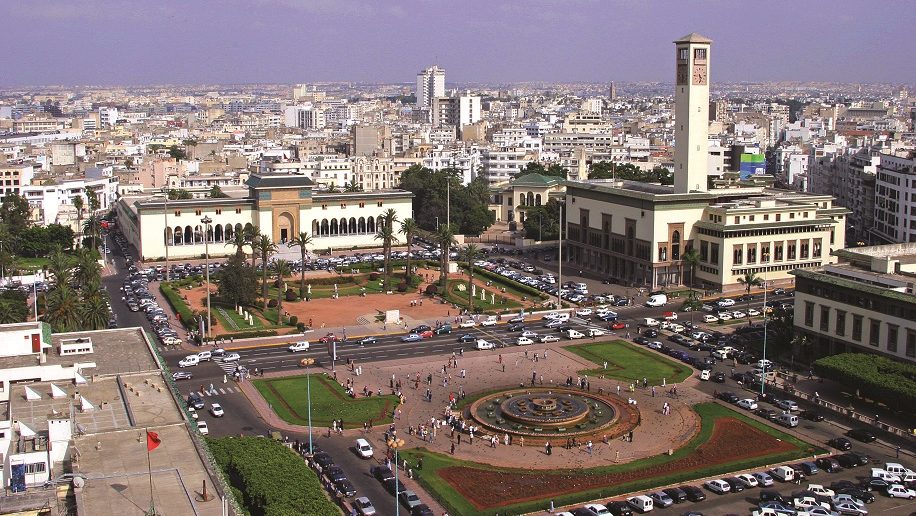Sunday's tropical storm not only closed Death Valley National Park, but also isolated hundreds of residents, visitors and workers as flooding closed California 190 and other park roads.
At 12:10 Monday, park management analyst Abigail Wines said: “We are optimistic that we will have an exit route tonight. Caltrans is amazing.”
Three hours later, Wines reported that crews had cleared the way so an ambulance could pass on 190 if necessary, but no non-emergency vehicles were allowed through. Visitors probably won't be able to leave until Tuesday, Wines said.
Wines estimated that about 400 people were effectively stranded inside the park on Sunday when Tropical Storm Hilary dropped 2.2 inches of rain, the wettest day on record, according to the park's tally. National Metereological Service. The NWS has said the park typically receives less than 2 inches per year.
That storm also knocked out power for about a day. “We just got power back about an hour ago,” Wines said shortly after 3 p.m.
Wines added that the park's restaurants were operating. Employees at Oasis at Death Valley and Stovepipe Wells, two of the park's busiest lodging and dining areas, said they had been ordered not to speak to the media.
Rocks, mud and flood water move away from California 190 after heavy rains hit Death Valley National Park early in the afternoon of August 20.
(Video and photos from the National Park Service)
Meanwhile, at Joshua Tree National Park, which closed Saturday in anticipation of heavy rain and flooding, rangers said the park would reopen Tuesday for day use only and no camping. A spokesperson said all visitor centers and paved roads would be open, but all dirt roads and campgrounds would be closed “until further assessments can be conducted.”
In Death Valley, Wines said the California Highway Patrol had a plane flying over the park, looking for stranded people. As of noon, she said, Badwater Road and Harry Wade Road appeared to be clear of people. A National Park Service plane was expected to join that effort upon arrival from Lake Mead National Recreation Area.
In the effort to reopen California 190, the National Park Service is clearing the road from Furnace Creek to Stovepipe Wells, Wines said, while Caltrans is clearing the route from Furnace Creek to Death Valley Junction.

Flooding on Highway 190.
(National Park Service)
When that is done, Wines said in an email, “we (residents, employees and visitors here) will have an exit route.”
Wines said a park contractor arrived at Scotty's Castle on Monday morning and reported “only minor impacts.” The castle, long a favorite spot for Death Valley tourists, has been closed since 2015, when it was severely damaged in another flood. After years of repairs, a reopening was tentatively set for late 2025.
Regarding the park reopening, Wines said, “I don't have enough information about the damage to be able to guess when the park will begin to reopen. Surely it will be in sections.” Later, he added that it would probably be “several days before anyone would be allowed in.”
The National Weather Service predicted a 50% chance of rain in Death Valley on Monday, falling to 20% at night with a “slight chance of thunderstorms.” A high of around 90 is expected in Furnace Creek.
The National Weather Service said flooding would likely affect areas such as Stovepipe Wells, Furnace Creek, Shoshone, Texas Springs Campground, Panamint Springs, Darwin, Mesquite Springs Campground, Scotty's Castle, Death Valley Junction and Tecopa.












